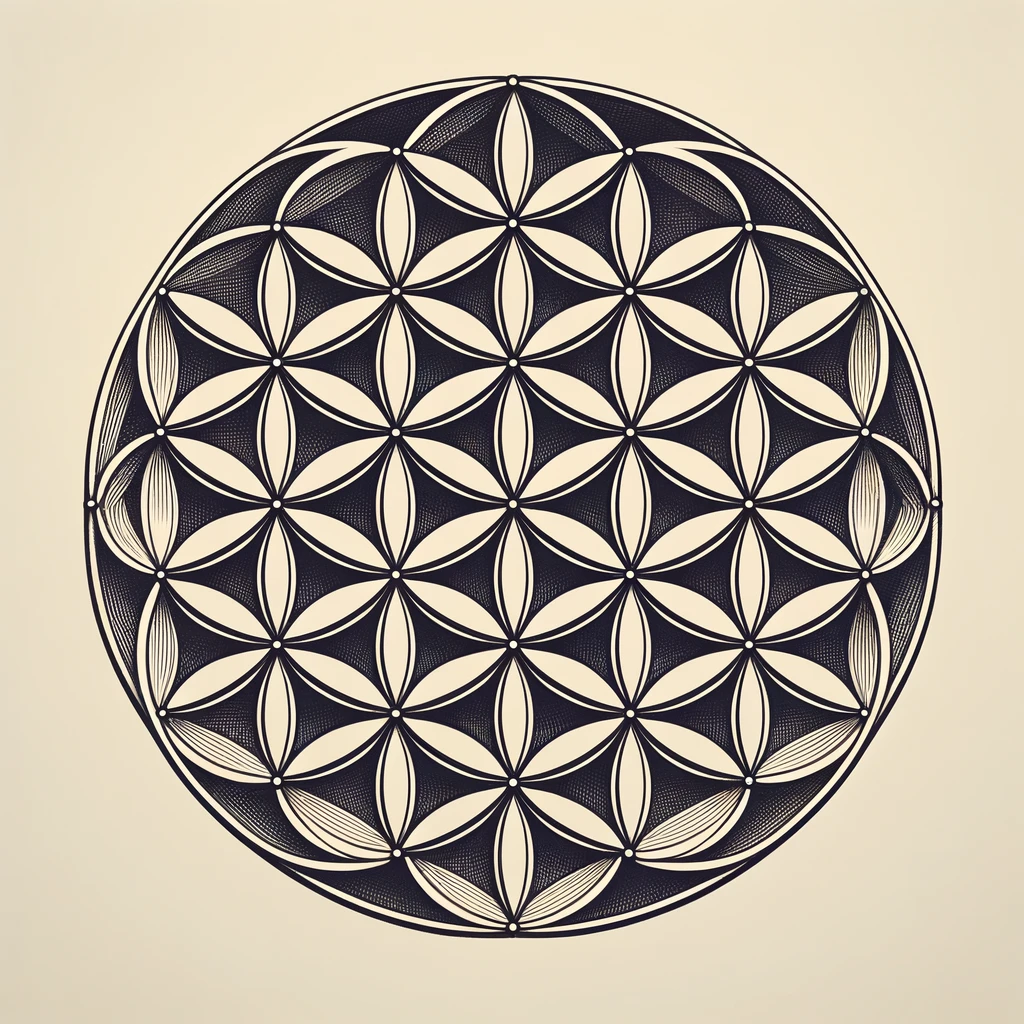
- Published on
- Authors

- Name
- You
Sacred Geometry and Breath: Aligning with Cosmic Patterns in Egyptian Practices
Introduction
The ancient Egyptians were adept practitioners of sacred geometry and understood the profound impact of breath on the human psyche and spiritual alignment. This article delves into how these seemingly esoteric concepts are intertwined, offering insights into their practices that blend advanced science and mystical wisdom.
Sacred Geometry: The Universal Blueprint
Sacred geometry refers to geometric shapes and patterns that are believed to underlie all of creation. In ancient Egypt, these forms were thought to be the building blocks of the universe, holding the key to understanding profound cosmic truths.
Key Geometric Shapes
| Shape | Symbolism | Egyptian Application |
|---|---|---|
| Circle | Unity, wholeness, infinity | Used in temple layouts |
| Triangle | Balance, harmony, and strength | Essential in pyramid construction |
| Square and Rectangle | Order, foundations, and stability | Seen in the design of sacred spaces |
| Spiral | Growth, evolution, and dynamics | Represented in art and hieroglyphs |
The Flower of Life
One of the most profound symbols in sacred geometry is the Flower of Life. Composed of multiple evenly-spaced, overlapping circles, it represents the cycle of creation and is found in various Egyptian temples. This symbol is believed to encode information fundamental to all living things, from the structure of DNA to the movement of planets.
Breathwork in Ancient Egyptian Practices
The Egyptians also understood the vital role of breath in achieving a state of spiritual and physical well-being. Breathwork (or conscious breathing) was integrated into their daily rituals, meditation, and healing practices, much like modern pranayama in yoga.
Techniques and Applications
- Rhythmic Breathing: Chanting during rituals often involved controlled, rhythmic breathing to induce trance states and connect with the divine.
- Breath and Sound: The power of breath was magnified through vocal vibrations, hymns, and mantras, resonating with specific geometric patterns in sacred sites.
- Meditative Breath: Used in combination with sacred geometry, meditation involved focusing on breath to align oneself with cosmic patterns.
The Science Behind the Mysticism
Incorporating cutting-edge scientific insights, we find correlations between ancient practices and modern findings:
- Resonance and Frequency: Modern physics shows us that everything has a frequency, resonating with specific geometric shapes. This aligns with the Egyptian use of breath and sound to interact with sacred geometry.
- Breath and the Autonomic Nervous System: Just as Egyptian sages believed in breath's transformative power, contemporary studies support its ability to influence the autonomic nervous system, promoting relaxation and healing.
- Fractals and Sacred Geometry: Scientific studies of fractals reveal that these complex geometric patterns are found throughout nature. The Egyptians’ use of fractals in art and architecture mirrors the natural world's intrinsic properties.
Practical Applications for Today
For modern practitioners, blending sacred geometry and conscious breathing can be a powerful tool for spiritual alignment and personal growth. Here are a few steps to start incorporating these practices:
- Meditate with Mandalas: Use geometrical mandalas as focal points during meditation, synchronizing your breath with the pattern.
- Chant Sacred Sounds: Incorporate ancient chants or mantras resonating with distinct geometric shapes during breathwork.
- Visualize Geometric Shapes: While breathing deeply, visualize basic sacred geometric shapes like circles and spirals to align your consciousness with universal patterns.
Conclusion
The wisdom of ancient Egypt offers a captivating intersection of sacred geometry, breathwork, and spiritual practices. By exploring these timeless techniques through the lens of modern science, we can uncover profound insights into our own spiritual journeys, aligning ourselves with the cosmic patterns that govern all existence.
Embrace the patterns and breath deeply — the universe is within you.
Diagram: Flower of Life

Sources:
- Pennick, N. (2001). Sacred Geometry: Symbolism and Purpose in Religious Structures. HarperCollins.
- Sheldrake, R. (2012). Science Set Free: 10 Paths to New Discovery. Deepak Chopra Books.
- Ancient Egypt Online. (n.d.). Sacred Geometry and Ancient Egypt.
